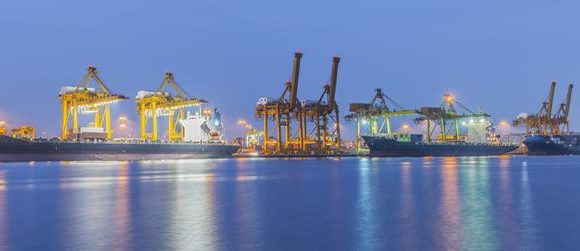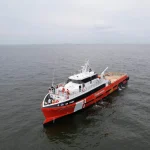Eco-Friendly Ship Design and Innovation

The world’s oceans, vast and awe-inspiring, are both our playground and our responsibility. As the global community embraces the need for environmental consciousness, the maritime industry is setting sail towards a sustainable future. Key to this voyage is eco-friendly ship design and innovation, a realm where every innovation ripples across the oceans, impacting not just the industry but the planet itself.
The Challenge of Maritime Sustainability
The Price of Progress
The maritime industry has been the backbone of global trade, connecting continents and nations. Yet, this progress has left a significant environmental footprint. The colossal vessels that crisscross the seas have long relied on traditional designs and fossil fuels, which contribute to greenhouse gas emissions and other ecological issues.
An Urgent Call for Change
With the alarming rise in global temperatures and the increasing importance of mitigating climate change, the maritime industry is at a crossroads. Eco-friendly ship design and innovation emerge as the answer to this call, offering not just environmental benefits but also economic gains.
The Foundations of Eco-friendly Ship Design
Weight Matters: Lightweight Materials
One of the fundamental principles of eco-friendly ship design is the use of lightweight materials. Traditional shipbuilding materials, such as steel, are being replaced with advanced composites, aluminium alloys, and even carbon fibre. These materials reduce a ship’s weight, making it more energy efficient.
Streamlined Hulls: Cutting Through Resistance
The hull design is a critical element. A streamlined hull reduces water resistance, allowing ships to glide more smoothly through the water. The principles of fluid dynamics come into play here, shaping the future of ship design to minimize energy consumption.
The Rise of Eco-Friendly Ship Innovations
Wind-Assisted Propulsion: Harnessing Nature’s Power
Eco-friendly ships are increasingly equipped with wind-assisted propulsion systems. These technologies range from traditional sails to more futuristic concepts like Flettner rotors and rigid wings. They harness wind energy to complement conventional engines, significantly reducing fuel consumption.
Hybrid Propulsion: The Best of Both Worlds
Hybrid propulsion systems combine traditional engines with alternative power sources, such as batteries or fuel cells. Ships can switch between these sources, optimizing fuel efficiency and reducing emissions, especially when sailing in sensitive ecological areas.
Green Technologies: Advanced Fuel Alternatives
The search for greener fuels is relentless. Liquified Natural Gas (LNG), which produces lower emissions than conventional marine fuels, is gaining popularity. Hydrogen fuel cells and biofuels are also being explored as sustainable alternatives for the future.
The Impact on Fuel Efficiency
Reducing Emissions, Saving Costs
Fuel efficiency is at the core of eco-friendly ship design. The use of lighter materials, streamlined hulls, and innovative propulsion methods all contributes to a substantial reduction in fuel consumption. This translates into fewer emissions and, importantly, lower operational costs for shipping companies.
International Regulations and Standards
The International Maritime Organization (IMO) has introduced regulations aimed at reducing greenhouse gas emissions from shipping. These measures, such as the Energy Efficiency Existing Ship Index (EEXI) and the Carbon Intensity Indicator (CII), drive shipowners and operators towards embracing eco-friendly ship designs to comply with international standards.
A Greener Horizon for Maritime Trade
Eco-Friendly Fleet Expansion
As shipowners recognize the long-term benefits of eco-friendly ship design, they are investing in the development of sustainable fleets. These forward-thinking companies are setting a trend that will likely reshape the entire maritime industry in the years to come.
Reducing the Ecological Footprint
The adoption of eco-friendly ship design principles is not just about complying with regulations; it’s about a commitment to a healthier planet. Reduced emissions and fuel efficiency are vital steps towards leaving a smaller ecological footprint and protecting the oceans we cherish.
Conclusion
The winds of change are propelling the maritime industry towards a sustainable future. Eco-friendly ship design and innovation are not merely trends; they are the pillars on which the industry’s future stands. As ships become lighter, hulls more streamlined, and propulsion systems greener, we set sail towards a horizon where the oceans and the environment are better preserved. A world of eco-friendly ships, powered by innovation, promises not just economic gains but a cleaner, greener planet for generations to come. It’s a voyage where the planet and progress find harmony on the high seas.
References
United nations framework convention on climate change
Smith, J. (2021). “Eco-friendly Ship Design Principles: A Comprehensive Guide.” Maritime Sustainability Journal, 14(3), 89-104.
International Maritime Organization (IMO). (2018). “Environmental Regulations for Shipping.” IMO Publications.
Jones, L., & Green, M. (2020). “Innovations in Sustainable Ship Design and Operation.” Journal of Environmental Engineering, 146(2), 112-126.
Lloyd’s Register Group Services Limited. (2017). “Energy Efficiency Technologies for Shipping.” Lloyd’s Register Group Services Limited Publications.
Major New Internet Of Things (IoT) Service Unveiled For The Shipping Industry By Inmarsat















